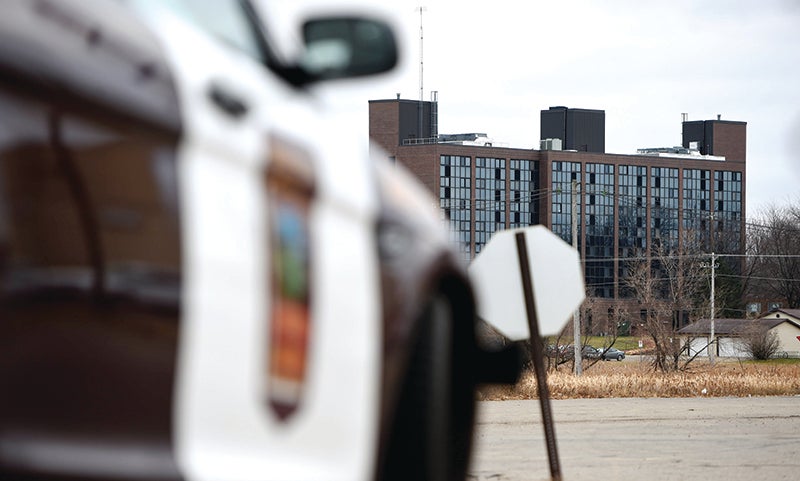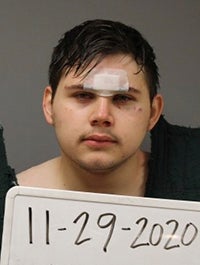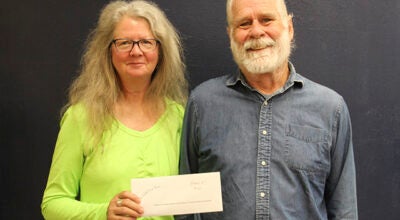Shady Oaks shooting was ‘a desperate attempt to commit a suicide,’ defense lawyer says
Published 5:01 pm Monday, September 12, 2022

- A Minnesota State Patrol trooper blocks off the entrance across from Shady Oaks apartment complex Nov. 29, 2021, the scene of an early morning shooting that injured three people. Eric Johnson/Albert Lea Tribune
|
Getting your Trinity Audio player ready...
|
Lawyers deliver opening statements, testimony begins in case against Devin Weiland
Defense attorneys argued during opening statements Monday that while their client did something he should not have done when he shot three people and led police on an eight-hour standoff in late November 2020 at Shady Oaks apartments, he did not intend to kill anyone else.
Instead, lawyer Graham Henry said, the only person Devin Weiland was trying to kill was himself — essentially “suicide by cop.”
The trial in Weiland’s case kicked off Monday morning after four full days of jury selection last week.
The statements raise the question of Weiland’s intentions in the shootings at Shady Oaks apartments Nov. 29, 2020, particularly as he faces three counts of first-degree attempted murder, one involving a police officer. He also faces three counts of second-degree assault.
Henry described the incident as a “desperate attempt to commit a suicide.”
It was the first day for jurors to hear testimony in the case, including from the officers who responded to the initial 911 call that came in that led officers to Shady Oaks that morning. The caller claimed there were fireworks or gunshots in the area of the apartments.
Daniel Vlieger with the Minnesota Attorney General’s Office, who is helping prosecute the case, said in his opening statements that Kody Needham, the first officer to respond that day, started his shift like most other shifts. But that changed at 2:17 a.m. the morning of Nov. 29 when dispatchers received the 911 call. Needham responded as he normally would, noting it was not out of the ordinary to hear a complaint like that.
Needham paused before he turned his squad car onto Fourth Avenue near the apartment complex and then turned into the parking lot, heard a loud bang and then felt pressure on his chest, as a bullet him in the vest. He got out of there as fast as he could and drove himself to the hospital.
Another man, Daniel Thorpe, who lived at the apartment complex, heard what he thought was fireworks and was concerned about his car so he came out of the building to check on his car. He found nothing and went to smoke and ultimately was shot in the arm.
Vlieger said shots continued in bursts in the hours that followed, and officers narrowed down where the shots were coming from, though they did not know for some time where they originated.
He said Weiland also shot down a drone, and a man who lived across the street who was driving past to go to work was shot in the leg through his car. He was ultimately taken to Mayo Clinic in Rochester.
A robot in the hall of the apartments told Weiland to surrender, the tear gas was shot into the apartment and a State Patrol deployed sniper teams.
Weiland surrendered at 10:45 a.m. after he was struck in the head with a fragment from a bullet.
The prosecutor said Weiland told police he had been at another apartment earlier that night and a confrontation occurred. He left that apartment and went to his own apartment, and there had been an accidental discharge that left a hole in the ceiling.
He said Weiland called 911 but when he saw a law enforcement officer pull up to the apartments he thought they were going to take his guns away.
Vlieger said Weiland admitted he shot down a drone and at a BearCat armored vehicle and estimated he shot about 75 times.
Authorities recovered four firearms in the apartment, including three rifles and a shotgun, as well as 70 shell casings.
In the parking lot below the apartment, 15 additional shell casings were recovered, along with the drone that was shot down.
Henry acknowledged that the jurors would hear evidence that supported Weiland was the shooter, and the defense would not bring in witnesses to tell otherwise.
But he said for Weiland to be found guilty of attempted murder, prosecutors were going to have to prove what Weiland was thinking and what he intended.
Henry said the evidence that Weiland did something terrible is indisputable, but the state saying he attempted murder is a weaker argument.
“Call this what it is — second degree assault,” the lawyer said.
He said his client was struggling and he expected jurors to see and hear about trash piled waist high in his apartment, along with the moldy food, bad smell and filthiness that was there.
“Weiland was someone who wanted desperately to die,” Henry said, noting that he filed the false 911 complaint that day because he wanted police to take his life.





